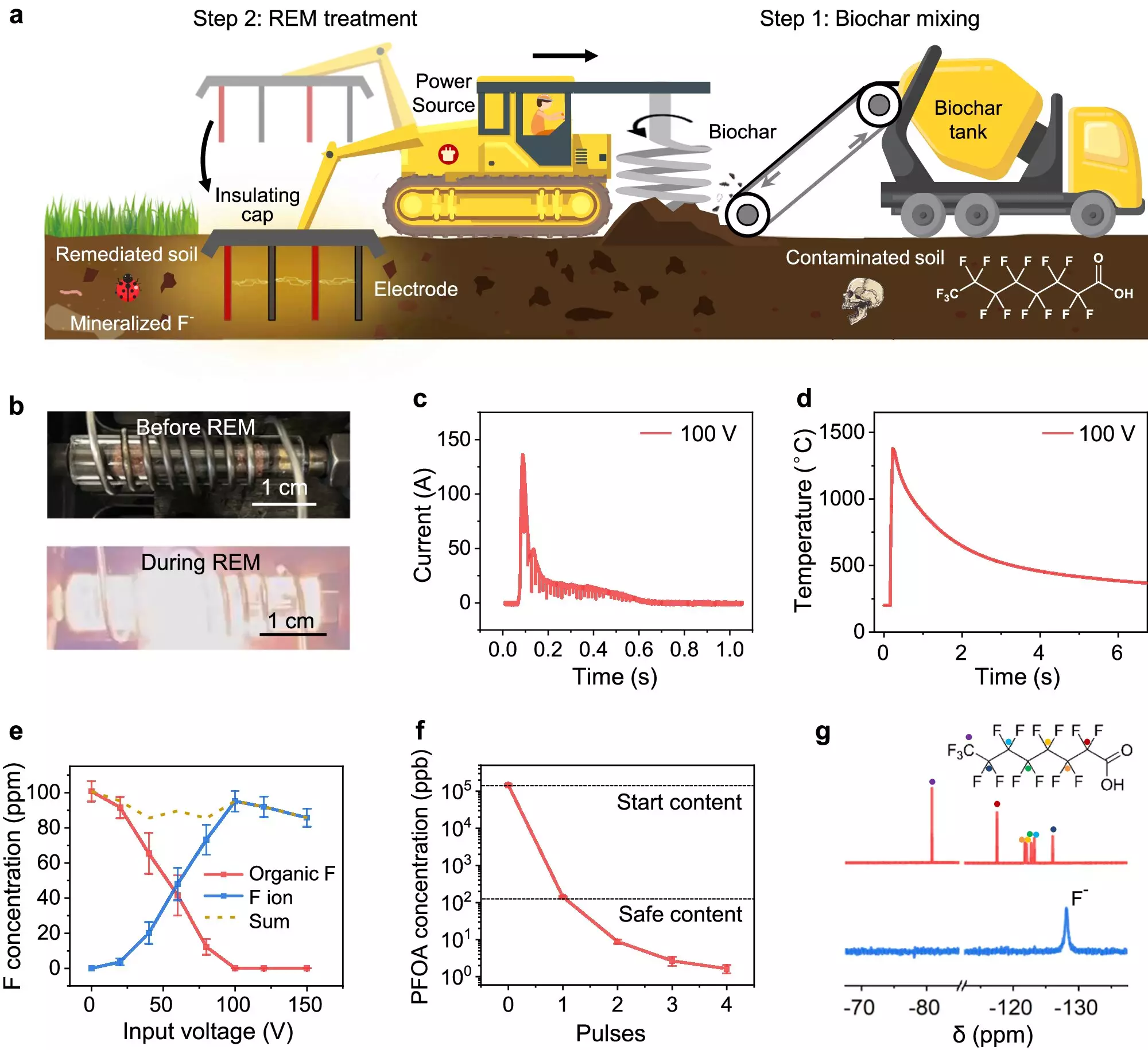Soil contamination is a critical issue that poses significant threats to the environment and human health. Traditional methods for remediation often fall short in terms of efficiency and environmental impact. However, a recent breakthrough in soil remediation research led by James Tour, a chemist at Rice University, offers a promising solution to this global challenge.
The REM Process
The rapid electrothermal mineralization (REM) process developed by James Tour and his research team represents a significant advancement in soil remediation technology. Unlike conventional methods, the REM process can remediate synthetic chemicals such as per- and polyfluoroalkyl substances (PFAS) in soil within seconds. PFAS are persistent and bioaccumulative pollutants that pose a serious threat to the environment and human health.
The REM process involves the use of electrical inserts in the ground along with biochar, a conductive additive, to rapidly heat contaminated soil to over 1,000°C. This intense heat converts PFAS into nontoxic calcium fluoride, effectively eliminating the contaminants. The process has shown high removal efficiencies of over 99% and mineralization ratios exceeding 90%.
Environmental Benefits
One of the most significant advantages of the REM process is its environmental friendliness. By utilizing natural calcium compounds present in the soil, the process reduces energy consumption, greenhouse gas emissions, and water use compared to traditional remediation methods. Additionally, the method enhances soil health by promoting nutrient supply and supporting the infiltration of arthropods.
The scalability of the REM process is another noteworthy aspect. While the lab-scale process can handle up to 2 kilograms of soil per batch, efforts are underway to develop larger-scale, on-site application systems. This progress marks a crucial step towards implementing the REM process on a broader scale for efficient soil remediation.
The REM process spearheaded by James Tour and his team represents a groundbreaking innovation in the field of soil remediation. The speed, efficiency, and environmental benefits offered by this method have the potential to revolutionize how we address soil contamination issues. As we continue to explore sustainable solutions for environmental challenges, the REM process stands out as a beacon of hope for a greener and healthier future.


Leave a Reply